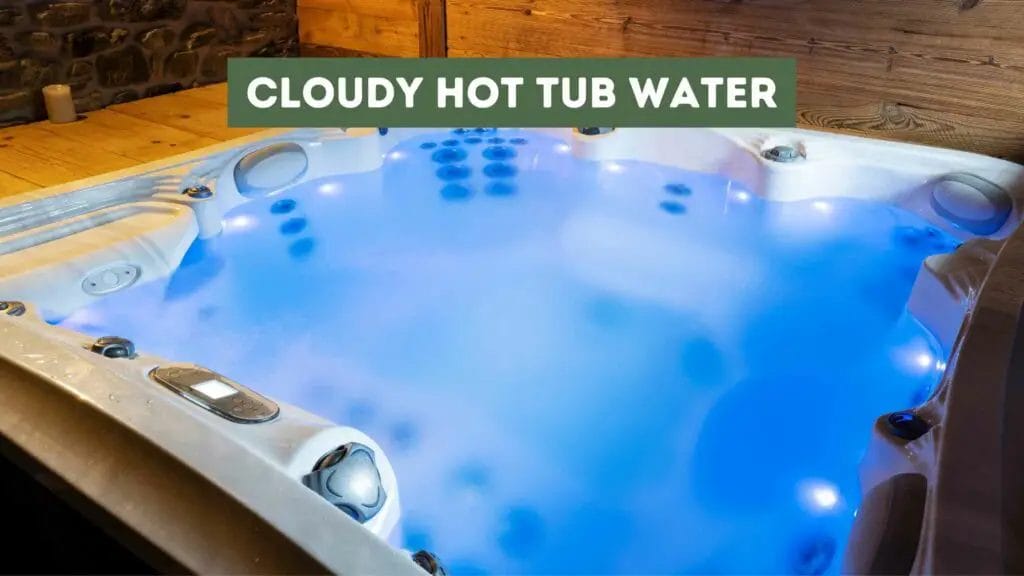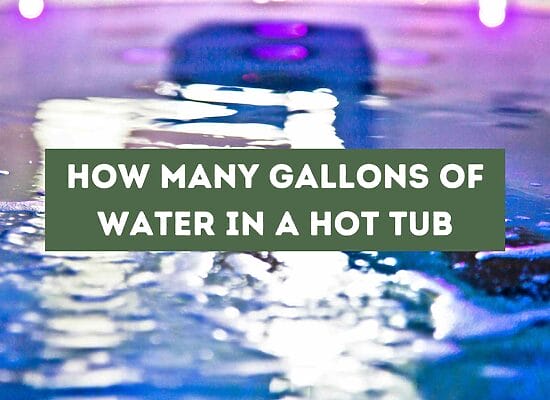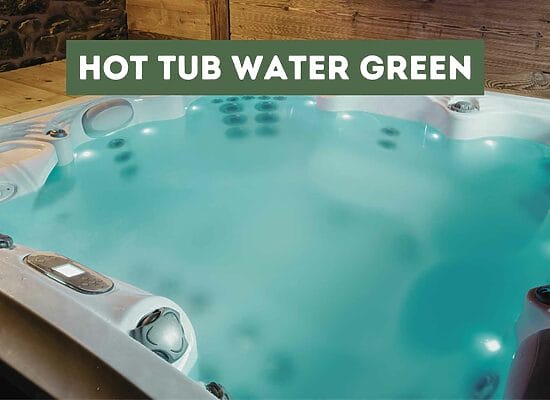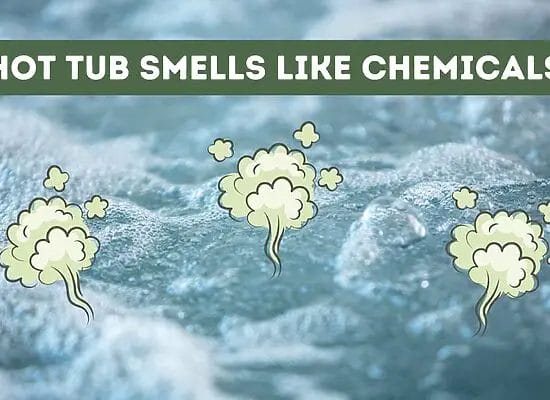
When you step into your hot tub, you want to relax and enjoy the warm water, not worry about cloudy water. Unfortunately, cloudy hot tub water is a common problem that can ruin your relaxation time. Cloudy water is usually caused by an imbalance of chemicals or the presence of pollutants in the water. It is important to know what causes cloudy, hot tub water and how to fix it to ensure your hot tub is always ready for use.
There are many causes of cloudy hot tub water, including high levels of bacteria and germs, elevated pH levels, and low levels of sanitizer. If you don’t maintain the proper chemical balance in your hot tub, it can lead to cloudy water. Additionally, if you don’t clean and maintain your hot tub regularly, pollutants and debris can accumulate in the water, causing it to become cloudy. It’s important to know how to prevent cloudy hot tub water so you can enjoy your spa without any worries.
Key takeaways:
- Cloudy hot tub water is a common issue caused by chemical imbalances and pollutants, disrupting the relaxation experience and necessitating awareness of causes and solutions.
- Contributors to cloudy water include high levels of bacteria, germs, elevated pH levels, and low sanitizer levels, emphasizing the significance of chemical balance.
- Imbalanced water chemistry, with pH and total alkalinity (TA) levels too high or low, leads to cloudiness. Adjustments, testing, and non-chlorine shock treatments are essential for resolution.
- Dirty or clogged filters, diminishing effectiveness and causing irritation, are another frequent cause. Regular cleaning or replacement is required to prevent cloudy water and discomfort.
- Cloudiness with a greenish tint may result from bacteria and algae presence, caused by low sanitizer levels or inadequate circulation. Shock treatments and proper sanitation are key remedies.
- Rain and debris accumulation, when hot tubs are uncovered during rain or accumulate dirt and leaves, contribute to cloudy water. Prevention involves covering and regular cleaning.
- Lotions, oils, and soaps from body care products can lead to cloudy water, necessitating pre-hot tub showers and avoidance of these products before using the hot tub.
Common Causes of Cloudy Hot Tub Water
If you own a hot tub, you know how important it is to keep the water clean and clear. However, cloudy water can sometimes occur, making it difficult to enjoy your hot tub. Here are some common causes of cloudy, hot tub water and what you can do to fix it.
Water Chemistry Imbalance
One of the most common causes of cloudy, hot tub water is an imbalance in water chemistry. If your pH or total alkalinity (TA) levels are too high or too low, it can cause the water to become cloudy. High pH and total alkalinity can also lead to low sanitizer levels, which can cause bacteria and algae to grow in the water.
To fix this issue, you should test your water regularly and adjust the pH and total alkalinity levels as needed. You can also shock the water with a non-chlorine shock treatment to kill any bacteria or algae.
Dirty or Clogged Filter
Another common cause of cloudy, hot tub water is a dirty or clogged filter. Filters are designed to trap particles, dirt, and other debris, but over time, they can become clogged and less effective. This can lead to cloudy water and even skin irritation or eye irritation.
To fix this issue, you should clean or replace your filter regularly. You can also use a filter cleaner to remove any buildup and improve the filter’s effectiveness.
Presence of Bacteria and Algae
If your hot tub water is cloudy and has a greenish tint, it could be due to the presence of bacteria and algae. This can occur if the sanitizer levels in the water are too low or if the water is not being circulated properly.
To fix this issue, you should shock the water with a non-chlorine shock treatment to kill any bacteria or algae. You should also check the sanitizer levels and adjust them as needed.
Impact of Rain and Debris
Rain and debris can also cause cloudy, hot tub water. If you leave your hot tub uncovered during a rainstorm, it can cause the water to become cloudy and dirty. Debris, such as leaves, dirt, and dust, can also accumulate in the water, making it cloudy.
To fix this issue, you should cover your hot tub when it’s not in use. You should also clean the water regularly and remove any debris that may have fallen into the water.
Effects of Body Care Products
Body care products such as lotions, oils, and soaps can also cause cloudy, hot tub water. When you get into the hot tub, these products can wash off your skin and into the water, causing it to become cloudy and foamy.
To fix this issue, you should shower before getting into the hot tub to remove any body care products from your skin. You should also avoid using these products before getting into the hot tub.
Testing and Adjusting Hot Tub Water
Maintaining the proper chemical balance in your hot tub is essential for keeping the water clear and clean. Testing the water regularly and making adjustments as needed will help you avoid cloudy and foamy water. Here are some tips for testing and adjusting your hot tub water.
Using Test Strips
Test strips are an easy and convenient way to check the chemical levels in your hot tub water. Simply dip the strip into the water and compare the colors to the chart on the packaging. Test strips can measure pH, total alkalinity (TA), and sanitizer levels.
Balancing pH and Alkalinity
Maintaining the proper pH and TA levels in your hot tub is crucial for preventing cloudy water. The ideal pH level for hot tub water is between 7.2 and 7.8. If the pH level is too high, use a pH decreaser (such as sodium bisulfate) to bring it down. If the pH level is too low, use a pH increaser (such as sodium carbonate) to raise it.
Total alkalinity is a measure of the water’s ability to resist changes in pH. The ideal TA level for hot tub water is between 80 and 120 ppm. If the TA level is too high, use a pH decreaser to lower it. If the TA level is too low, use an alkalinity increaser (such as sodium bicarbonate) to raise it.
Managing Sanitizer Levels
Sanitizer levels are important for killing bacteria and keeping the water clean. Chlorine, bromine, and biguanide are common sanitizers used in hot tubs. The ideal sanitizer level for hot tub water is between 3 and 5 ppm.
To test sanitizer levels, use a test strip or a drop test kit. If the sanitizer level is too low, add more sanitizer according to the manufacturer’s instructions. If the sanitizer level is too high, dilute the water with fresh water.
Cleaning and Maintaining the Hot Tub
To keep your hot tub water clear and sparkling, it is essential to clean and maintain your hot tub regularly. Here are some tips to help you keep your hot tub clean and well-maintained.
Cleaning the Filter
The filter is an essential part of your hot tub, as it helps to remove dirt, debris, and other contaminants from the water. Over time, the filter can become clogged with debris, which can reduce its effectiveness. To keep your filter clean, you should rinse it off with a garden hose regularly. You can also use a filter cleaner to remove any stubborn dirt or debris. It is recommended that you clean your filter at least once a month.
Draining and Refilling the Tub
Draining and refilling your hot tub is an important part of its maintenance. Over time, the water can become contaminated with bacteria, oils, and other contaminants, which can make the water cloudy and uninviting. To avoid this, you should drain and refill your hot tub every three to four months or as recommended by the manufacturer. Before refilling the tub, it is important to clean the interior thoroughly to remove any dirt or debris.
Regular Shock Treatments
Shock treatments are an essential part of hot tub maintenance, as they help to remove bacteria, oils, and other contaminants from the water. There are two types of shock treatments: chlorine and non-chlorine. Chlorine shock treatments are more effective but can be harsh on the skin and eyes. Non-chlorine shock treatments are gentler but may require more frequent applications. It is recommended that you shock your hot tub once a week to keep the water clean and clear.
Pro Tip: To keep your hot tub water clear and sparkling, it is important to test the water regularly and adjust the pH and alkalinity levels as needed. You can use test strips or a water testing kit to check the water chemistry. Additionally, you should avoid using lotions, oils, and other personal care products before entering the hot tub, as they can contribute to cloudy water.
Advanced Solutions for Cloudy Hot Tub Water
If you’ve tried the basic solutions for cloudy hot tub water and still can’t seem to get it clear, it might be time to try some advanced solutions. In this section, we’ll cover some additional techniques that can help you get your hot tub water looking crystal clear again.
Using Clarifiers and Defoamers
One option for clearing up cloudy, hot tub water is to use a clarifier. Clarifiers work by gathering together small particles in the water, making them easier to filter out. You can find hot tub clarifiers at most pool and spa supply stores. Be sure to follow the instructions carefully when using a clarifier, as using too much can actually make the water cloudier.
Another product that can help with cloudy water is a defoamer. Foam can sometimes build up on the surface of hot tub water, and while a little bit of foam is normal, too much can cause the water to become cloudy. Defoamers work by breaking down the foam, which can help to clear up the water. Again, be sure to follow the instructions on the product carefully, as using too much can cause the water to become even cloudier.
Applying Pre-Filters and Sequestering Agents
If you’re dealing with cloudy, hot tub water due to high levels of minerals like calcium or copper, a pre-filter might be a good solution. Pre-filters attach to the hose you use to fill up your hot tub, and they work by filtering out minerals and other contaminants before they even enter the spa water. This can help to prevent cloudy water from forming in the first place.
Another option for dealing with high levels of minerals is to use a sequestering agent. Sequestering agents work by binding to minerals and other contaminants in the water, making them easier to filter out. Be sure to follow the instructions on the product carefully, and be aware that using too much can actually cause the water to become cloudier.
Employing Enzymes and Metals
Enzymes can be a helpful tool for preventing cloudy water in the first place. Enzymes work by breaking down organic matter and contaminants in the water, which can help to prevent algae and other unwanted growths from forming. You can find hot tub enzymes at most pool and spa supply stores.
If you’re dealing with cloudy water due to high levels of metals like copper, a metal remover might be a good solution. Metal removers work by binding to the metal ions in the water, making them easier to filter out. Be sure to follow the instructions on the product carefully, and be aware that using too much can actually cause the water to become cloudier.
By employing these advanced solutions, you can get your hot tub water looking crystal clear again. However, if you’re still having problems, it might be time to consider replacing your hot tub filter or seeking professional help to diagnose and fix the problem.
FAQ: Cloudy Hot Tub Water
How can I clear up cloudy water in my hot tub?
There are several ways to clear up cloudy water in your hot tub. First, make sure your filters are clean and functioning properly. You can also adjust the pH and alkalinity levels of your water, shock your hot tub, or use a clarifier product specifically designed for hot tubs. Be sure to follow the instructions on any products you use and test your water regularly to maintain proper chemical levels.
What causes hot tub water to become cloudy?
Cloudy water in hot tubs is usually caused by a buildup of organic and inorganic materials, such as dead skin cells, body oils, and bacteria. High levels of calcium or other minerals can also contribute to cloudy water. In some cases, poor filtration or improper chemical balance can be the culprit.
Is it normal for hot tub water to be cloudy?
No, it is not normal for hot tub water to be cloudy. Cloudy water can be a sign of poor water quality and can be a health hazard if left untreated.
What are some common reasons for cloudy, hot tub water?
Some common reasons for cloudy hot tub water include poor filtration, high levels of organic and inorganic materials, improper chemical balance, and high levels of minerals such as calcium.
Can adding too much chlorine cause hot tub water to become cloudy?
Yes, adding too much chlorine can cause hot tub water to become cloudy. Chlorine levels should be maintained within a safe range to prevent cloudiness and ensure that the water is safe for use.
How often should I shock my hot tub to prevent cloudy water?
The frequency of shock treatments will depend on how often you use your hot tub and how many people use it. As a general rule, you should shock your hot tub once a week to maintain proper water quality and prevent cloudy water. However, if you notice cloudy water or an unusual odor, you may need to shock your hot tub more frequently.












